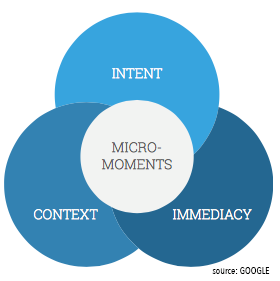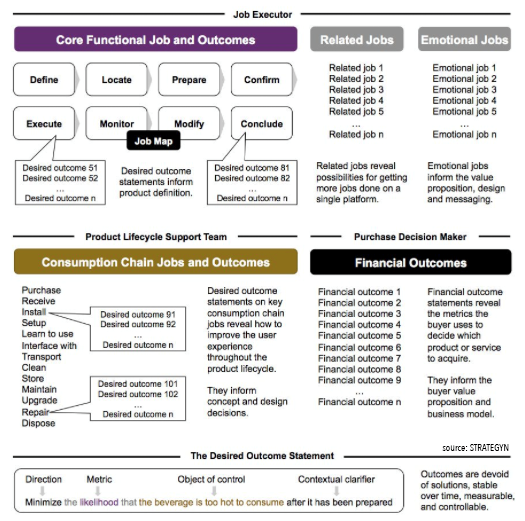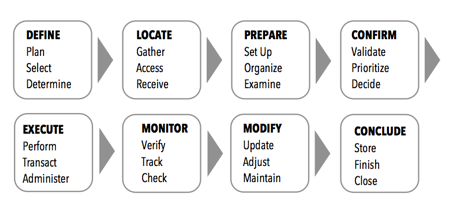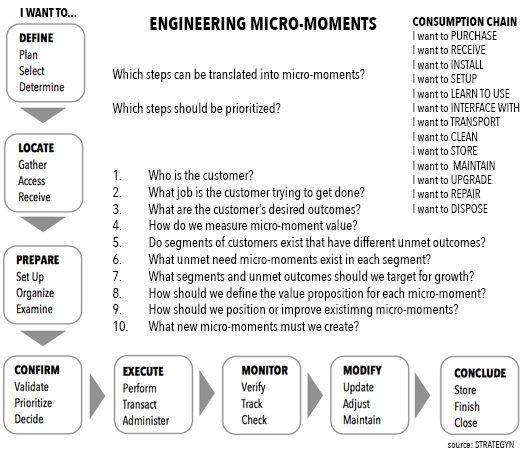Here’s a relatively new concept that is sweeping across the radar of brand managers across the marketing world: micro-moments.
Introduced to us by Google’s Sridhar Ramaswamy, micro-moments are the moments or instances when we turn to a device–often a smartphone–to take action on whatever we need or want right now.
According to Ramaswamy, “Micro-moments are critical touch points within today’s consumer journey, and when added together, they ultimately determine how that journey ends.”
These I-want-to-know, I-want-to-go, I-want-to-buy, and I-want-to-do moments are loaded with intent, context, and immediacy.

Ramaswamy’s research gives us the following insights:
- Of leisure travelers who are smartphone users, 69% search for travel ideas during spare moments, like when they’re standing in line or waiting for the subway. Nearly half of those travelers go on to book their choices through an entirely separate channel.
- Of smartphone users, 91% look up information on their smartphones while in the middle of a task.
- Of smartphone users, 82% consult their phones while they’re standing in a store deciding which product to buy. One in 10 of those end up buying a different product than they had planned.
- Of online consumers, 69% agree that the quality, timing, or relevance of a company’s message influences their perception of a brand.
Google’s advice: The successful brands of tomorrow will be those that have a strategy for understanding and meeting consumers’ needs in these micro-moments.
The Four Types of Micro-Moments
Google also classifies micro-moments into four distinct categories:

Google asks us to consider three strategic imperatives:
1. Be There. Anticipate the micro-moments for users in your industry, and commit to being there to help when those moments occur.
2. Be Useful. Be relevant to consumers’ needs in the moment and connect people to the answers they’re looking for.
3. Be Quick. Mobile users want to know, go, and buy swiftly. Your mobile experience has to be fast and frictionless.
The Jobs-to-be-Done Needs Framework
How can businesses apply Job Theory (Jobs-to-be-Done) to micro-moments?
Let’s begin with the Jobs-to-be-Done Needs Framework:

This framework introduces the types of jobs customers are trying to get done and the outcomes they are trying to achieve in those moments. They include (i) the core functional Job-to-be-Done, (ii) the desired outcomes tied to the core functional Job-to-be-Done, (iii) related jobs, (iv) emotional and social jobs, (v) consumption chain jobs, and (vi) the buyer’s financial desired outcomes.
While a job describes the overall task the customer is trying to execute, an outcome is a metric the customer uses to measure success and value while executing a job. For every functional and consumption chain job there exists a set of up to 50 or more desired outcome statements.
For a given core job, each one these other related, emotional or consumption chain jobs and/or outcomes can be addressed in a micro-moment.
Applying Jobs-to-be-Done to Micro-Moments
Analysis of hundreds of jobs has revealed that all jobs consist of some or all of just eight fundamental process steps : define, locate, prepare, confirm, execute, monitor, modify and conclude (the “universal job map”).

Add to this what we call consumption chain jobs. After a product is purchased (which is a separate job), it must be received, installed and set-up. Then someone has to learn how to use it and interface with it. Someone may also have to transport, clean, store, maintain, upgrade, repair, and dispose of it. While people don’t buy a product so they can clean, repair and dispose of it, a company that engineers winning micro-moments along one or more of these dimensions could differentiate itself in the marketplace.
When it comes to micro-moments, we should examine each step and sub-step. Each sub-step has the potential to be engineered into a micro-moment, along with the consumption chain jobs. So, for example:

Define the Micro-Job, Not the Micro-Moment
Do not define the Job-to-be-Done as a situation that a customer finds himself or herself in. Rather define the micro-job around what the customer decides to do in that situation. For example, you may find yourself bored waiting in line at a doctor’s office, but again, overcoming boredom is not the job, nor is the job to “fill my time while waiting”. Rather, what the customer chooses to do when she/he is bored is the real Job-to-be-Done. And they may choose to execute any one of the steps in the core job or attempt to address a specific outcome.
For example, when you are standing in line waiting to see the doctor, you may choose to use your smartphone to “see how late the doctor is running”, “confirm that the doctor’s office has your latest insurance information”, “learn what questions to ask the doctor to best understand your illness”, or execute other jobs that can be accomplished through a smartphone application.
They are the Micro-Jobs. And yes, they may be viewed as potential micro-moments in which your company could engage with the customer.




I find this article very valuable.
Something I would like to discuss – >When Tony said : “you may find yourself bored waiting in line at a doctor’s office, but again, overcoming boredom is not the job” – he is totally RIGHT.
But unfortunately today when people experience those kind of moments – in 99% of the time there is already a company that addicted the user to a habit that is connected with that specific internal trigger.
Causing most people, instead of doing something effective with their time ( like finding the best questions to ask the doctor), just open to the app that managed to associate that trigger to their product ( Facebook, twitter, pinterest,…)